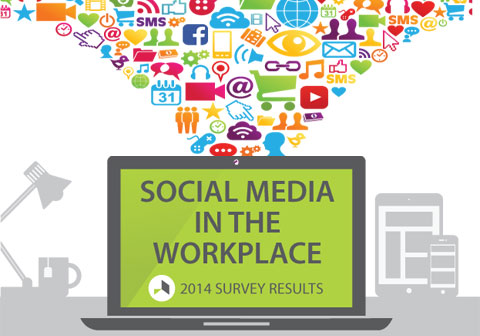
Through the Digital Looking Glass

Smart businesses use social media precisely that way, as the ideal tool for establishing relationships, and for attracting and retaining customers. They encourage their employees to participate in social media and use industry-relevant groups and networks to share useful information and engage discussions as unofficial brand ambassadors.
I’m going to start by quoting from the poem “To a Louse” by the Scottish poet Robert Burns:
“Oh wad some power the giftie gie us
To see oursel’s as others see us!
It wad frae monie a blunder free us,
An’ foolish notion…”
The ability to see yourself through the eyes of others, and modify your behavior accordingly, would be a valuable gift indeed. Corporate brands spend millions of dollars each year attempting to do exactly that by using focus groups, surveys, and other forms of research. Increasingly, that’s money being wasted.
Studying the past is for archeologists
The problem with the traditional approach to such research is that it provides only a snapshot of how the public perceived a brand when the study was performed. In today’s digital marketplace, brand perceptions are in continual flux, and knowing what a statistical sampling of individuals believed last month – or even last week – may be inaccurate or misleading.
Predictive research studies that evaluate prospective product features, marketing tactics and branding strategies are certainly valuable. However, the relevance of studies that attempt to measure and profile existing brand perceptions is being eroded by the emergence of social media platforms. Brands are being defined, to a growing extent, by conversations in the public forum that exists within social networks. A post that goes viral can travel around the world in a matter of hours, and stimulate thousands of spinoff conversations, both positive and negative. When it regards a brand, the effects may become a part of that brand’s image for years to come. And it can happen in a day… or even less.
It’s not just what you say, it’s what you hear
Many businesses shy away from fully embracing the full potential of social network marketing. They may have a corporate Facebook or Twitter account and post to them occasionally, but they do little to stimulate followers. They rarely venture off their own pages to participate in the larger conversations going on elsewhere. This is ineffective and, to my mind, ironic. Where is the sense in funding research to learn what the public thinks about your brand when that information – raw and unvarnished – is there looking back at you on social media networks? Not only can you learn what you are doing right and what you can do better, social media also provide an avenue for correcting misconceptions, addressing problems, and mending any rips or tears in your brand’s image.
Smart businesses use social media precisely that way, as the ideal tool for establishing relationships, and for attracting and retaining customers. They encourage their employees to participate in social media and use industry-relevant groups and networks to share useful information and engage discussions as unofficial brand ambassadors.
Attitude is everything
My own company recently surveyed employees of businesses across the country to evaluate the effect that management attitudes might have on social media participation. About two-thirds of the employees who responded said that their companies encouraged the use of social media in the workplace. However, when questioned on their perceptions of senior management attitudes, 55% cited the C-suite as being either “cautious” or “not open” toward social media.
When cross-tabulated against desirable, business-related behaviors, the employees of companies that encouraged participation were many times more likely to use social media to acquire industry updates, research the activities of competitors, and post company-provided content on their personal social channels. The differences were even more pronounced with regard to perceptions of senior management attitudes. In fact, when asked if they would share company-provided content if asked to by their employer, 59% of those in companies with an open attitude toward social media said they would. This compared with 44% in companies where the attitude was cautious, and only 19% in those where the senior management attitude was described as not open to social media.
Honesty is the only policy
Social media can provide businesses with the gift that Robert Burns wrote about, but it doesn’t come without a string attached. It only pays to learn how your brand is perceived if you are willing to act on that knowledge. Once you enter the social conversation, the only safe course is to be genuine, honest and transparent. If you aren’t, it will quickly become apparent, with effects that can be decidedly negative.
Relationships happen between people, and companies must be prepared to let their employees interact and engage with customers, potential customers, and those in their industry – not as shills or manipulators, but as contributing members of a community. The business will benefit from what the employees learn and the good will they generate.
A mirror doesn’t show us what we wish to see: it shows us what we need to see… and how we need to change.
